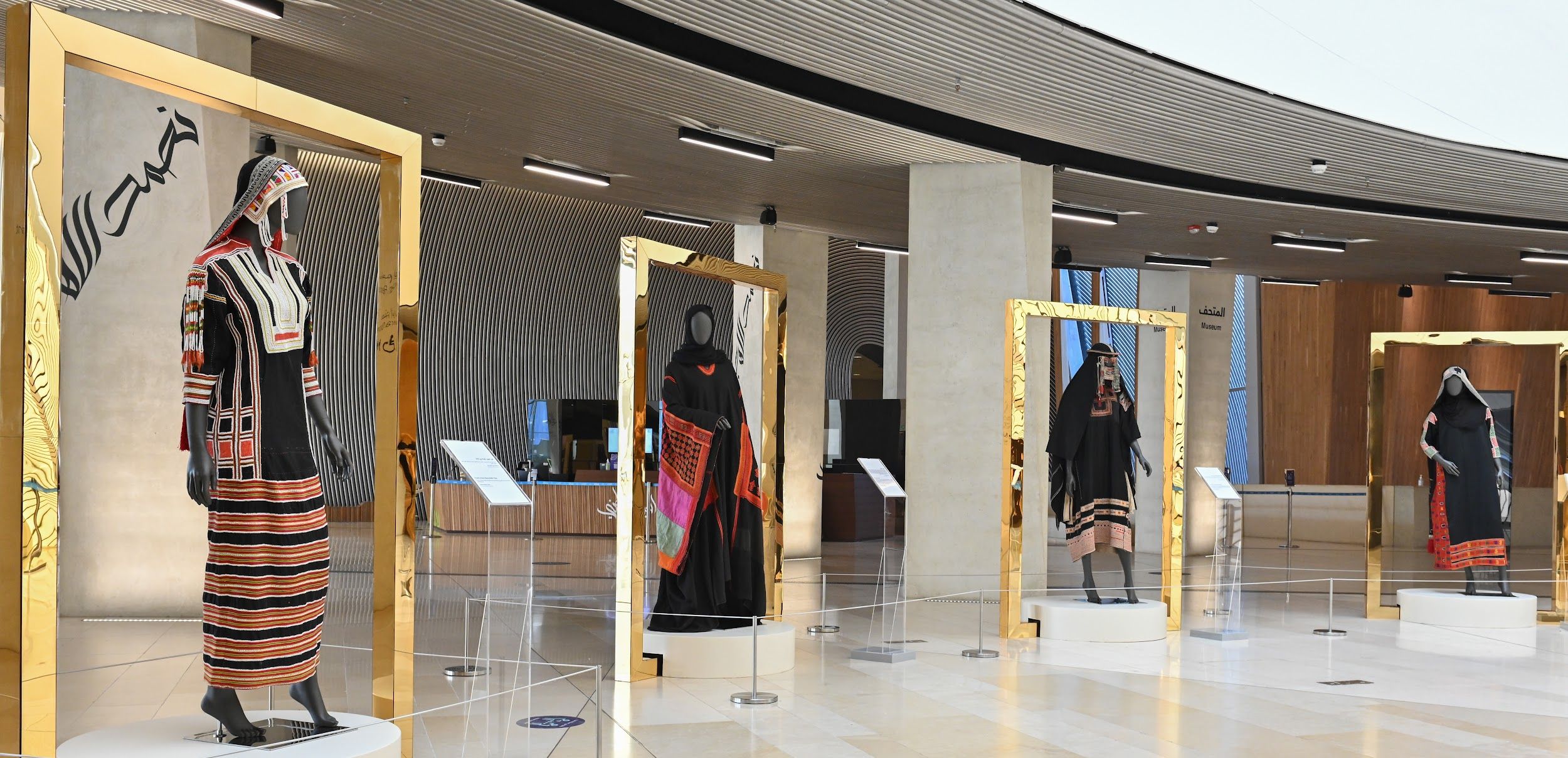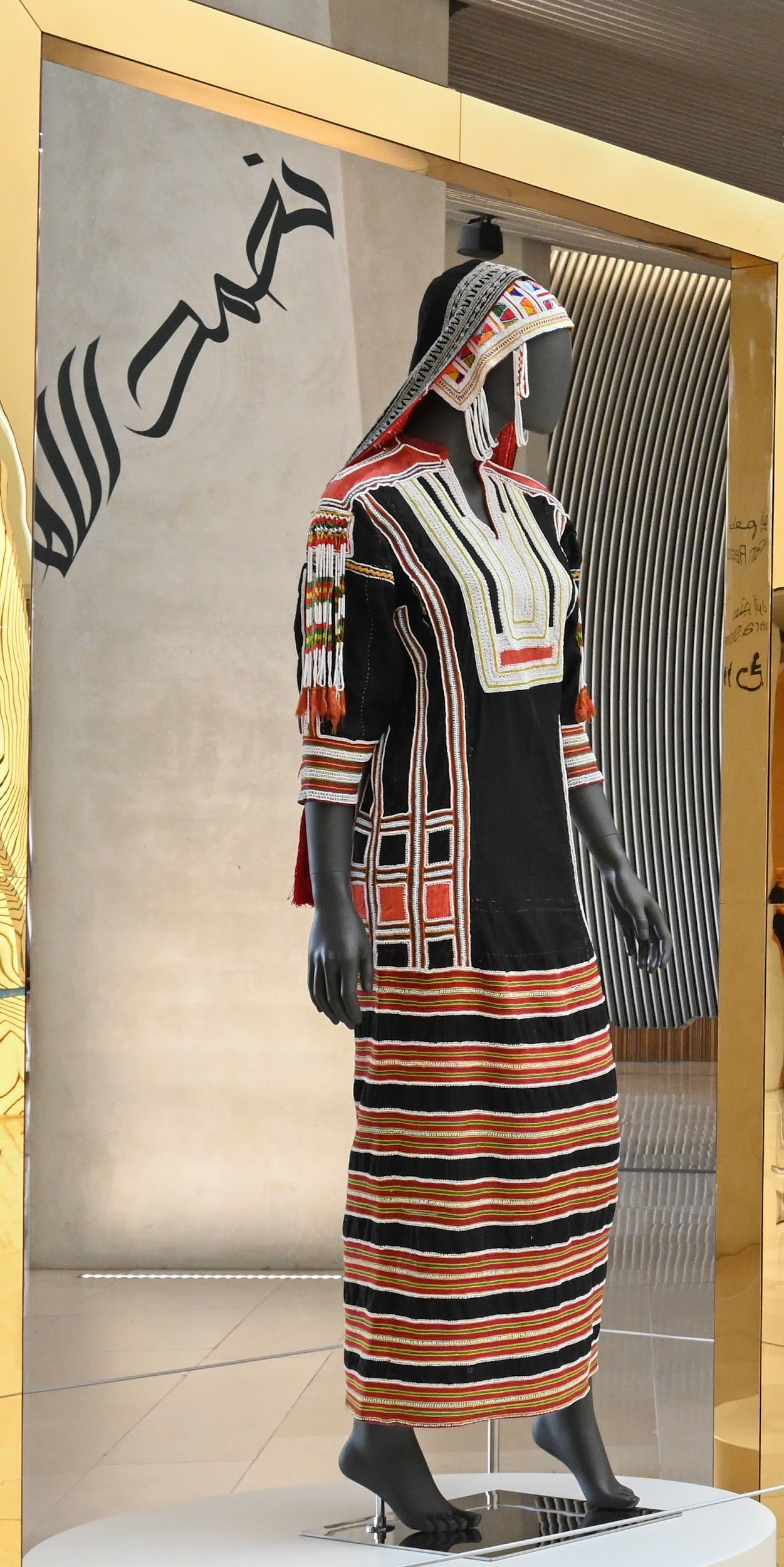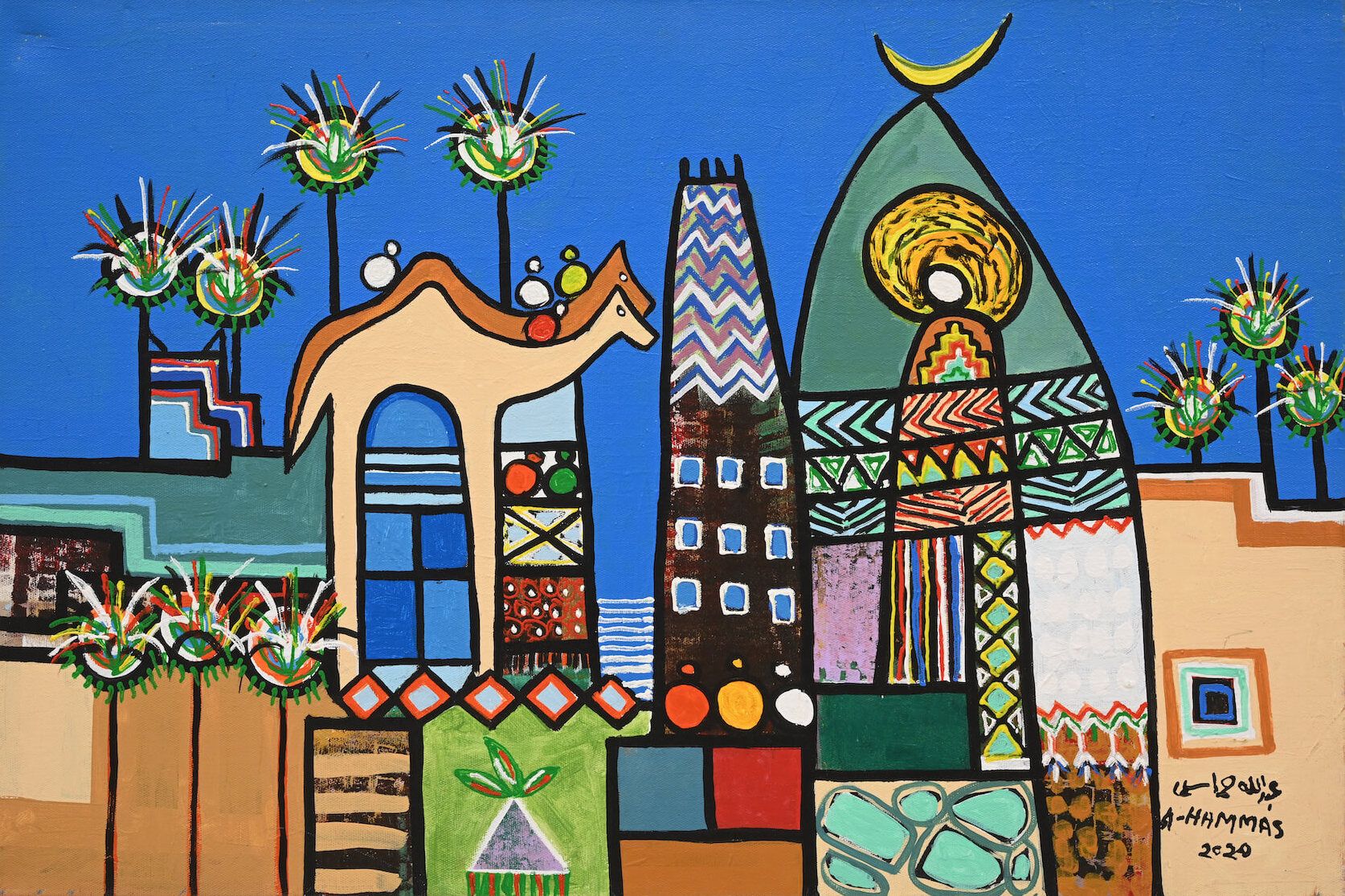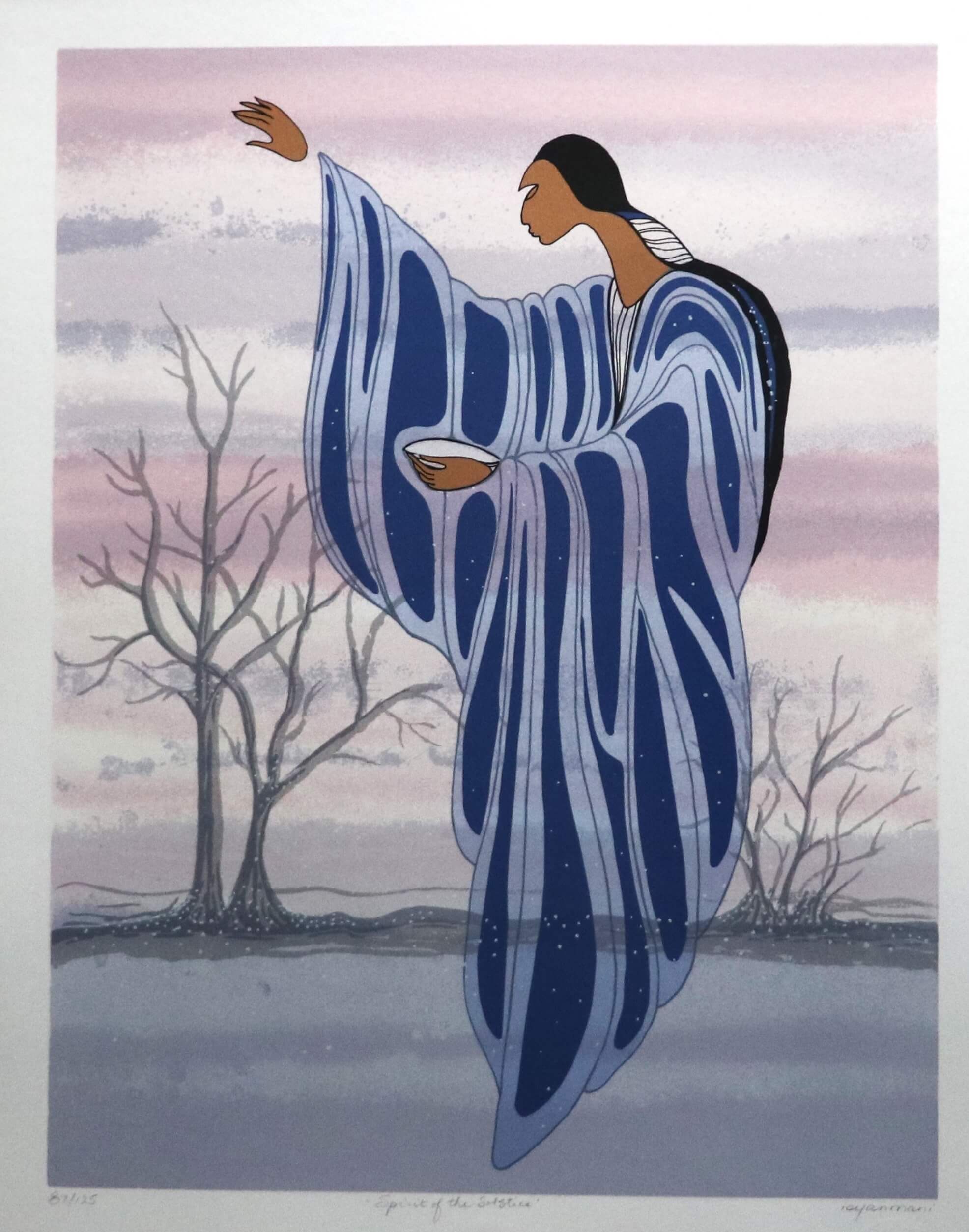Artistic Fabric
Example of Saudi embroidery and traditional attire. Tafaseel exhibition (Ithra).

Several traditional fashion pieces highlighting the various embroidery and knitting techniques in Saudi Arabia.
Traditional knowledge, in its diverse manifestations, has garnered global reverence as a custodian of the histories and civilizations of nations. It highlights their culture and distinctiveness as it represents a human legacy. Recognizing its significance, international agreements, notably those championed by UNESCO, endeavour to not only spotlight but also document and safeguard these traditions. They underscore its pivotal role in defining the national identities of diverse societies while fostering cultural and human collaboration worldwide.
Traditional knowledge is present in most of the works undertaken by humans, and is linked to the history of people, their literature, arts, values, customs and traditions. It includes knowledge, skills, innovations and practices that are transmitted between generations, and make them feel connected to their ancestors.
It stands as a cornerstone underpinning the progress of nations across multifaceted domains, perpetually evolving and renewing itself. The expression of this repository of knowledge takes myriad forms, encompassing oral traditions, musical compositions, artistic creations, and tangible artifacts, all ranging from captivating dances and melodious songs to timeless tales and intricate handicrafts.
This includes the artisanal craftsmanship inherent in traditional fashion design, incorporating weaving, knitting, and embroidery techniques alongside embellishments such as jewellery and ornamental elements. Traditional cultural expressions, whether tangible or intangible, often represent a harmonious blend of both realms, exemplified prominently in the traditional attire of Saudi Arabia.
Traditional attire serves as a conduit linking our ancestral legacy to the contemporary realm, defining the wearer's identity through a melange of embellishments, hues, fabrics, artistic forms, and technical virtuosity.
Embroidery, an ancient artistry predating the availability of patterned textiles, holds profound significance within traditional attire. It adorns garments, particularly those reserved for ceremonial occasions and festive revelries, intricately weaving narratives through each meticulously stitched motif. Embroidery assumes a pivotal role in infusing diversity into the otherwise limited range of traditional garments, characterised by fixed designs, contingent upon the occasion and the wearer's economic standing. Rare was the piece devoid of these embellishments; they adorned necklines, chests, sleeves, and occasionally scattered throughout the dress fabric.
Within the domain of traditional Saudi Arabian attire, women emerged as artisans, wielding their creativity with finesse. Despite the primitive tools at their disposal, the methods of decoration varied, showcasing an unparalleled knack for utilizing the surrounding environment's resources to transcend mere materiality. These garments and their embellishments became eloquent expressions of a woman's ingenuity and distinctive aesthetic sensibilities.
The Kingdom of Saudi Arabia is divided into five principal geographic regions, each distinguished by its customs, traditions, and geographical nature. Embroidery has been evident in the clothing of all these regions, defining the distinctiveness of each area through its patterns and colors.
Embroidery served not only an aesthetic purpose but also functional roles such as strengthening openings, covering seams, protecting edges, and linking garment pieces together.
Artistic motifs were inspired by the surrounding environment, leading to a spontaneous style of embroidery. People devised their own designations and techniques through experience and practice, resulting in geometric patterns or simple botanical shapes. Multiple stitches and vibrant colors were employed, often using silk threads in vivid shades of red, purple, crimson, green, and yellow, with limited use of black and white, as well as metallic gold and silver threads. Other materials like beads, sequins, and metallic coils were also incorporated into these designs. All this was done without pre-drawn patterns, relying solely on the woman's imagination to craft precise and intricate decorations without any measuring tools except her fingers.

Example of traditional heritage fashion within the Kingdom.
Among the most essential materials used in embroidery:
Threads: Various types of threads were employed in the embroidery of traditional clothing, including:
• Metallic Threads: Gold, silver, and gilded metal threads, known as "Zari" or "Qasab," were used in embroidering garments for events and celebrations across most regions of the Kingdom.
• Silk Threads: Known as "Ibreesm" or "Nuzak," silk threads were available in a spectrum of colors.
• Cotton Threads: Used for embroidering everyday and less expensive garments, these cotton threads complemented fabrics in contrasting colors to the garment being embroidered.
• Wool Threads: Used sparingly for garments requiring such threads, typically after dyeing them in suitable colors.
● Fabrics: Fabrics formed the primary foundation for hand embroidery. Traditional fabrics were known by vastly different names from contemporary designations. These old names often described the fabric material itself, such as "Ibreesm, Tour, and Yashmak". Alternatively, they denoted the type of designs, patterns, or embellishments, such as "Habb al-Heel," "Dag al-Nayr," and "Rabyana." Some designations indicated the exporting country's name, like "Egyptian", "American", and "Chinese".
Moreover, fabrics were utilized for embellishing clothing through techniques like appliqué and patchwork.

More traditional fashion pieces on display at a previous Saudi National Day exhibit.
● Added Embellishments:
Added embellishments hold significant importance in adorning traditional garments, and fixed embellishments were widely used in clothing. They had a long lifespan owing to being crafted from precious materials like gold and silver, often transferred from old, faded garments to new ones, retaining their captivating allure.
Sequins: Multi-colored circular metallic flakes perforated at their centers, initially made of silver or gold sequins before the emergence of plastic.
Talli: Thin metallic sheets coated with gold or silver, rectangular in shape, inserted into holes in the fabric of the garment to create beautiful geometric decorations with multiple decorations and themes.
Korar: A decorative buttonhole-like trim, woven and attached simultaneously to the fabric of the garment by two facing women: one embroidering, the other assisting.
Silver Buttons: Not conventional buttons per se but small, hollowed-out balls made of silver with loops used to fasten them together near the cuff opening. Sometimes these balls are stitched to cover part of the side cuff seam. Another smaller type, pierced on both sides, is arranged along the cuff edge during embroidery, placed equidistant amidst embroidery stitches. These buttons, often made of silver or lead, are non-consumable adornments, usually removed from old attire and affixed to new ones.
Traditional clothing and its adornments in Saudi Arabia underwent a drastic and noticeable change due to the rapid societal evolution post-oil discovery, endangering their existence. Hence, the urgency in studying them, uncovering their intricacies, preserving, and modernizing them becomes a national duty and a crucial imperative. We need to bestow special attention to ensure the connection between our past and present remains intact, preventing the disappearance of this heritage along with those who inherited it from their ancestors.
Documentation and registration of traditional knowledge play a crucial role in organizing, systematizing, and preserving it for future generations. It works toward showcasing and realizing societal appreciation for various cultures, and safeguarding their intellectual property and related products.


